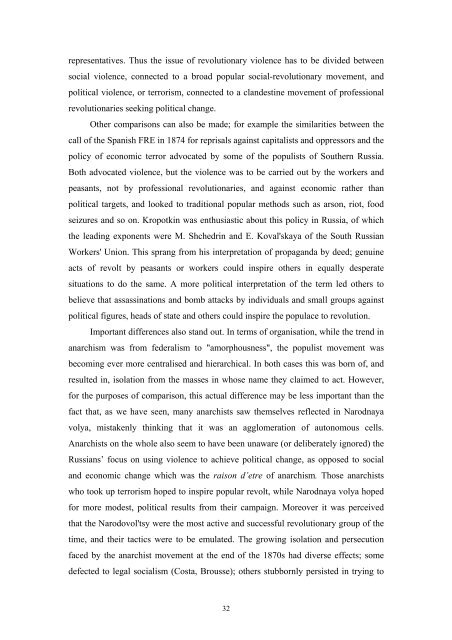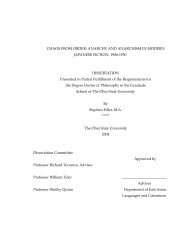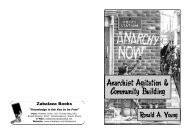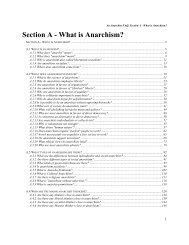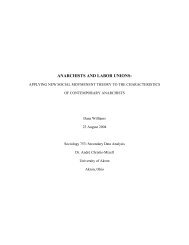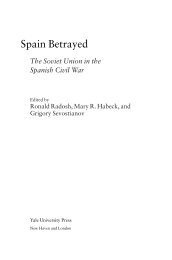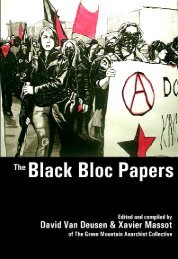Graham Gamblin - Infoshop.org
Graham Gamblin - Infoshop.org
Graham Gamblin - Infoshop.org
You also want an ePaper? Increase the reach of your titles
YUMPU automatically turns print PDFs into web optimized ePapers that Google loves.
epresentatives. Thus the issue of revolutionary violence has to be divided between<br />
social violence, connected to a broad popular social-revolutionary movement, and<br />
political violence, or terrorism, connected to a clandestine movement of professional<br />
revolutionaries seeking political change.<br />
Other comparisons can also be made; for example the similarities between the<br />
call of the Spanish FRE in 1874 for reprisals against capitalists and oppressors and the<br />
policy of economic terror advocated by some of the populists of Southern Russia.<br />
Both advocated violence, but the violence was to be carried out by the workers and<br />
peasants, not by professional revolutionaries, and against economic rather than<br />
political targets, and looked to traditional popular methods such as arson, riot, food<br />
seizures and so on. Kropotkin was enthusiastic about this policy in Russia, of which<br />
the leading exponents were M. Shchedrin and E. Koval'skaya of the South Russian<br />
Workers' Union. This sprang from his interpretation of propaganda by deed; genuine<br />
acts of revolt by peasants or workers could inspire others in equally desperate<br />
situations to do the same. A more political interpretation of the term led others to<br />
believe that assassinations and bomb attacks by individuals and small groups against<br />
political figures, heads of state and others could inspire the populace to revolution.<br />
Important differences also stand out. In terms of <strong>org</strong>anisation, while the trend in<br />
anarchism was from federalism to "amorphousness", the populist movement was<br />
becoming ever more centralised and hierarchical. In both cases this was born of, and<br />
resulted in, isolation from the masses in whose name they claimed to act. However,<br />
for the purposes of comparison, this actual difference may be less important than the<br />
fact that, as we have seen, many anarchists saw themselves reflected in Narodnaya<br />
volya, mistakenly thinking that it was an agglomeration of autonomous cells.<br />
Anarchists on the whole also seem to have been unaware (or deliberately ignored) the<br />
Russians’ focus on using violence to achieve political change, as opposed to social<br />
and economic change which was the raison d’etre of anarchism. Those anarchists<br />
who took up terrorism hoped to inspire popular revolt, while Narodnaya volya hoped<br />
for more modest, political results from their campaign. Moreover it was perceived<br />
that the Narodovol'tsy were the most active and successful revolutionary group of the<br />
time, and their tactics were to be emulated. The growing isolation and persecution<br />
faced by the anarchist movement at the end of the 1870s had diverse effects; some<br />
defected to legal socialism (Costa, Brousse); others stubbornly persisted in trying to<br />
32


